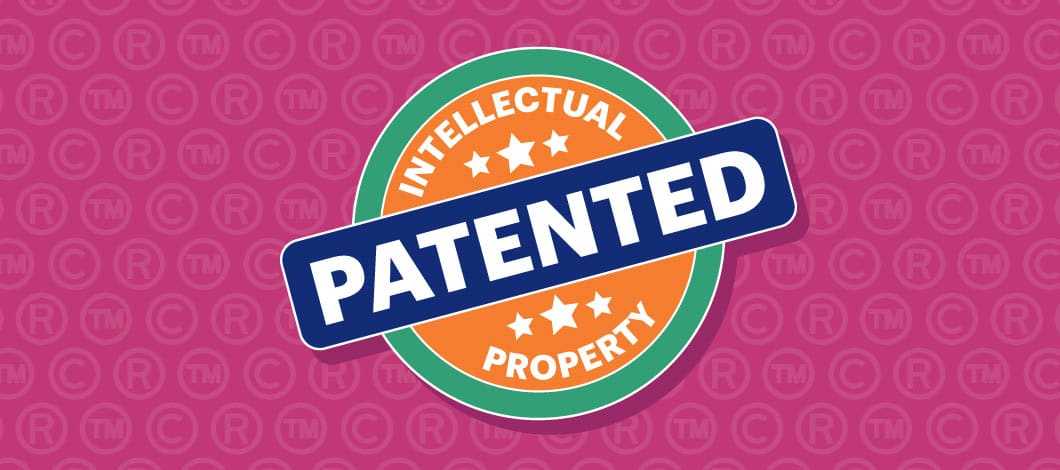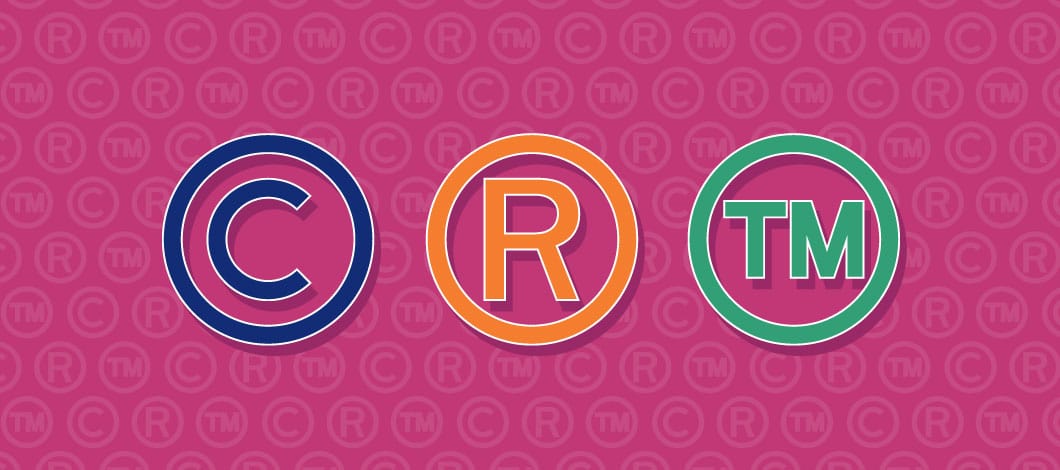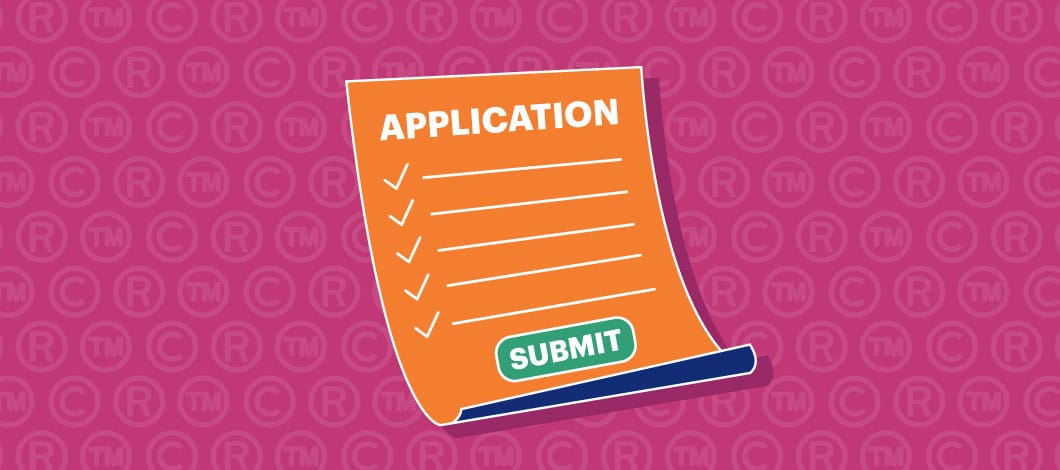Applying for a patent or trademark protects your intellectual property. It can help you recover damages if someone infringes on you. Just as important, it discourages others from stealing your ideas or pirating your brand.
Whether you’re trying to protect your company’s intellectual property or your own, here’s what you need to know about how to apply for a patent or trademark.
Patents vs. Trademarks vs. Copyrights
To apply for the right intellectual property protection, it helps to understand the difference between a patent, a trademark and a copyright. These terms are related, and some people tend to use them interchangeably, but they refer to distinct types of intellectual property protection. You need to know which one applies to you before applying for the appropriate protection with the U.S. Patent and Trademark Office (USPTO).
Patents
A patent protects your rights to a product or process you’ve invented. It prohibits someone else from selling something based on an exact copy of your design or process, and it can help you recover damages if they do so.
There are 3 types of patents:
- Utility patents, granted to the inventor or discoverer of a useful new process, machine, product (technically called an article of manufacture), chemical or physical combination of materials (called a composition of matter)
- Design patents, granted for a new ornamental design for an article of manufacture
- Plant patents, granted for genetically engineered plants
When people talk about patents, they usually mean utility patents, which are the most common type.
Patents have an expiration date. Utility and plant plants expire 20 years after filing, while design patents expire 15 years after issuance. Additionally, you must pay a maintenance fee to maintain a utility patent in force after 4, 8 and 12 years.
Trademarks
A trademark protects a distinguishing mark that identifies your product or service, such as a brand name, phrase, symbol or logo design. It prohibits someone else from selling something using your brand’s distinguishing mark.
Trademarks that label services rather than products are sometimes called service marks. However, the term “trademark” is commonly used for both products and services. The USPTO organizes trademarks into classes representing different categories of products and services.
Unlike a patent, a trademark does not automatically expire. As long as you continue to use your mark for business and submit periodic paperwork and fees, you continue to retain the rights to your trademark.
-
Keep in Mind
You don’t have to register a trademark officially with the USPTO to acquire the rights to it. If you start using your trademark for business, you can establish a right to it based on common practice (“common law”).
However, if you formally register your trademark with the USPTO, you gain some advantages which can help you in case a trademark dispute arises. These include public notification and documentation of your trademark ownership, a nation-wide presumption of trademark ownership and the exclusive right to use your trademark for business.
Copyrights
A copyright protects original works where you are considered the author or coauthor. This can include written works such as books as well as dramatic, musical and artistic works. Computer software also can be copyrighted.
For works created by an individual, copyrights last the lifetime of the author plus 70 years. For works created anonymously, under a pseudonym or for hire, copyrights last the shorter of 95 years from the date of publication or 120 years from the date of creation.
As with trademarks, you don’t have to formally apply for a copyright to own the rights to one, but it can help you in the event of a dispute.

When Do You Need to Apply for a Patent or Trademark?
The process of applying for a patent or trademark requires a significant investment in time and money, so before embarking, you should first determine whether it’s worth your while.
Do You Need a Patent?
To determine whether to apply for a patent, you can ask yourself a series of questions:
- Is the product or process under consideration eligible for a patent?
- Would it help my business to keep others from duplicating this product or process?
- Is the product or process unique enough to win patent approval?
- Can I afford it?
Here’s a more detailed breakdown of what each question involves:
Eligibility
Regarding the first question, consider whether the intellectual property you wish to patent falls under one of the 3 categories of patents mentioned earlier: utility, design and plant. If your property falls under the utility category, it should fall into one of the 4 subcategories: process, machine, article of manufacture or composition of matter.
Business Value
Would a patent help your business? Think about whether you stand to gain more business if you’re the only one allowed to use your idea as well as whether you risk losing business if others are allowed to duplicate your idea. For instance, if you’ve invented a new way of producing something but it isn’t especially more efficient than what others are already doing, you probably wouldn’t gain much by patenting it.
Also, be aware that patenting a process can be more difficult than patenting a physical product. It’s more difficult to point to a process for documentation unless you have direct evidence of the methods your competitor is using, which may require inside information, such as a trip to their factory. If you would need to invest a significant amount of research to document that your competitor is using your method, it may not be cost-effective or realistic in some cases.
Uniqueness
As for uniqueness, to qualify for a patent, your invention must be both novel and nonobvious. Your product or process should deliver some unique value not offered by similar items already on the market, such as additional functionality. It also should be something that the average user of similar products wouldn’t come up with on their own by using common sense. For example, trying to patent a hairdryer as an ice melter might face an uphill battle because this application is already obvious and in widespread use.
Cost
Finally, with respect to cost, trying to obtain a patent yourself will cost you at least $900, with significant time and labor involved, according to an analysis by professional services provider Thervo. Applying for one with help from a patent attorney or agent will cost an average of $6,000 to $12,000, depending on the complexity of your idea.
You need to consider whether your budget will allow this and whether it will be worth your return on investment. If it seems worthwhile but you lack the capital, consider seeking business financing.
Do You Need a Trademark?
Considerations for seeking a trademark are similar. Consider eligibility, business benefits, uniqueness and costs. From a business perspective, filing for a trademark is more important if you intend to sell outside your state or region or in a different country, advises intellectual property attorney Michael Atkins. Initial trademark application fees currently start at $225 per class of goods and services.
How to Apply for a Patent
The official USPTO patent process overview breaks the steps for getting a patent down into 8 parts. These can be summarized as follows:
- Determine whether you need a patent
- Verify your eligibility for a patent
- Identify which type of patent you need
- Develop your patent application strategy
- Prepare and submit your application
- Work with your assigned examiner
- Finalize approval
- Maintain your patent
Here’s more about what each step involves:
1. Determine Whether You Need a Patent
The first step is simply determining whether you need a patent or some other type of intellectual property protection such as a trademark or copyright. Does your intellectual property fall into the scope of a utility patent, design patent or plant patent? Are you trying to protect a process, machine, article of manufacture or composition of matter? A unique aesthetic design for a product? A genetically engineered plant? If none of these apply, a patent may not be what you need.
2. Verify Your Eligibility for a Patent
If you’ve determined that your intellectual property requires a patent rather than another form of protection, the next step is to verify that your invention is patentable. This requires confirming that no one else already holds a patent for an invention similar to yours.
To ascertain this, you will need to do a patent search. This is a systematic review of previous patents already on file with the USPTO and its European partner, the European Patent Office (EPO). Doing a patent search can be the most difficult part of the application process. If you aren’t familiar with how to do one, the USPTO recommends getting help from an attorney or agent registered with them.
3. Identify Which Type of Patent You Need
The next step is to determine which of the 3 major types of patents you need. Does your intellectual property require a utility patent, a design patent or a plant patent?
4. Develop Your Patent Application Strategy
Once you know what type of patent you’ll be applying for, you can begin developing an application strategy. Here you should consider:
- How much your application will cost
- How long it will take
- Whether you might pursue any expedited options that USPTO offers
- Whether you need to apply for international protection
- Whether you should file a provisional application, which is a fast and inexpensive way to establish temporary 12-month protection for your invention while you’re preparing to go through the full patent process by filing a normal (nonprovisional) application
- Whether you should hire an attorney or agent
How you answer these questions will define how you should proceed.
5. Prepare and Submit Your Application
When you’re ready, you can prepare and submit your application. Here you should follow the USPTO’s patent application guides.
6. Work with Your Assigned Examiner
Following submission, if your application is incomplete, you will be notified and given a deadline for submitting corrections. If it is complete, an examiner will review it and evaluate whether your application qualifies for approval. If they find it doesn’t qualify, they will discuss their rationale with you and give you an opportunity to make amendments or challenge their argument. If you are using an attorney or agent, they will handle communicating with your examiner.
7. Finalize Approval
If your examiner decides to approve your application, you will receive a document called a Notice of Allowance. It will list an issue fee and possibly a publication fee which must be paid before your patent is issued. Following receipt of payment, utility patents are normally issued in about 4 weeks and mailed out at the time of issue.
8. Maintain Your Patent
If you want a utility patent to remain in force after 4, 8 and 12 years, you must pay scheduled maintenance fees. Otherwise, your patent will expire.
How to Apply for a Trademark
The process for applying for a trademark is similar to that for a patent but simpler:
- Determine whether you need a trademark
- Prepare a trademark
- Prepare and submit your application
- Work with your assigned examining attorney
- Finalize approval
- Maintain your trademark
Here’s a description of what each step involves:
1. Determine Whether You Need a Trademark
In this step, you determine whether you need a trademark or some other type of intellectual property protection. Are you trying to protect a brand name or logo?
2. Prepare a Trademark
Once you know you need a trademark, the next step is to prepare a trademark for submission. You must follow certain guidelines to ensure that your mark is registrable and protectable. For example, your mark must not be so similar to another trademark representing a competitor in your market that it could cause confusion to buyers.
In general, a mark is easier to register and protect if it uses a word not widely used in your market or a word that suggests your product or service in a creative way, rather than describing it directly or generically. For example, “Google” was a distinctive use of a term previously restricted to a mathematical context, and it didn’t directly convey the idea of a search engine, which made it easy to register and protect. Had Google tried to trademark a more descriptive and generic name such as “Internet Search Engine,” this would have been more difficult to register and protect.
As with a patent, you should do a trademark search to see if anyone has already registered a similar mark. An attorney can assist you with this. If you are domiciled outside the U.S., you must use an attorney to represent you to the USPTO.
3. Prepare and Submit Your Application
When you’re ready, you can fill out and submit your application. The processing fee for submitting your application is not refundable, even if your application gets refused. You should monitor your application online throughout the remaining steps of the process to keep an eye on updates and filing deadlines.
4. Work With Your Assigned Examining Attorney
If USPTO decides that your application meets minimum requirements, it will receive a serial number and be assigned to an examining attorney. This part of the process can take months. The examining attorney will review your filing and search for conflicting trademarks.
If they decide to refuse your application, they will issue you a letter called an office action informing you of their grounds and giving you an opportunity to respond within 6 months. If only minor corrections are required for your application, the examining attorney may contact you by telephone or email.
5. Finalize Approval
If the examining attorney sees no objections to your application, they will approve your trademark for publishing in the USPTO’s weekly Official Gazette and send you a notice of publication. Any party who believes they have been damaged may then have 30 days to oppose your registration or request an extension to oppose.
If the opposition is unsuccessful or no opposition is filed, your application enters the next phase. Following notice of publication, it can take 3 to 4 months before you receive notice of the next status of your application.
After publication, if no opposition is forthcoming, the USPTO will issue a notice of allowance about 8 weeks after publication. You have 6 weeks after issuance to either use the trademark in commerce and submit a document called a statement of use (SOU) or request a 6-month extension to file a statement of use.
If your SOU meets minimal filing requirements, an examining attorney will review it to determine whether to permit registration of your trademark. If they find no grounds for refusal or additional requirements, they will approve your SOU. Otherwise, they will send you an office action letter explaining the grounds for refusal or the additional requirements.
You will then have an opportunity to follow up before a deadline. If they are not satisfied with your response to their refusal, they may issue a final refusal office action, which you can appeal for an additional fee.
6. Maintain Your Trademark
About 2 months after approval, the USPTO will issue a registration of your trademark. To keep your registration in active status, you must file specific maintenance documents at intervals of 5 and 10 years. Failure to file can result in your trademark being canceled or expiring. To keep your trademark active, you should monitor it annually, and especially between 5 and 6 years after registration and between 9 and 10 years after registration. Keep your contact information up-to-date in the USPTO’s files, notifying them of any changes.
Protect Your Intellectual Property to Retain Your Profits
Applying for a patent or trademark can help ensure that someone else isn’t making money off your ideas and hard work. If you own a valuable piece of intellectual property, start taking steps today to make sure someone else can’t steal what belongs to you.
If you need help with the application process, consider seeking help from an intellectual property lawyer or another professional. If you aren’t sure you can afford the patent application process, the USPTO sponsors a pro bono program for independent inventors and small businesses that meet certain criteria. You also might consider seeking a small business loan to cover your patent application costs.












